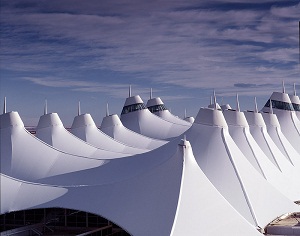Denver's International Airport expands solar power
 Denver International Airport, already recognized as one of the country’s “greenest” airports, will more than double the energy it gets from renewable sources when its newest solar array comes online next year, said Woods Alee, the airport’s director of project controls and energy management.
Denver International Airport, already recognized as one of the country’s “greenest” airports, will more than double the energy it gets from renewable sources when its newest solar array comes online next year, said Woods Alee, the airport’s director of project controls and energy management.
The airport signed contracts with Constellation Energy Group on Tuesday to install enough photovoltaic solar panels to produce another 4.4 megawatts of power on the far north side of DIA.
“It’s a little bit larger than the two existing systems we have put together,” Allee said. “After this, if we take all the systems together, they will produce about 6 percent of our total [energy] load.”
The airport’s near-term goal for energy from renewable sources is 10 percent by 2013, Allee said, which means this contract with Constellation Energy is probably not the last.
This contract will work in much the same way the other two do. The airport will lease some of its land at a nominal fee to Constellation, buy the power and sell it back to the local utility company, Excel Energy.
The airport’s other two array’s generate about 3.6 megawatts of electricity a year and produce slightly more energy than is needed to power the facility’s fuel farm, Allee said.
“We have some natural ingredients that let us be competitive in this realm,” Allee said.
Solar is a good fit for the airport, Allee said. It’s surrounded by thousands of acres of unoccupied land that is likely to remain that way for many years to come and gets plenty of consistent sun.
The decision to expand the facility’s solar energy production was motivated by both environmental and economical factors, Allee said. Airports are notoriously huge resource consumers with massive carbon footprints. Along with trying to produce clean energy, Denver International Airport has attempted to conserve energy and reduce its carbon footprint, Allee said.
The airport has the second-largest bus fleet in the state, but powers its shuttles with clean-burning natural gas.
On top of saving about 5,000 metric tons of CO2 emissions a year, the energy produced by the new solar array will cost about 20 percent less a year, Allee said.
“It’s not a huge proportion, but over its life, it will save us some money,” Allee said.



